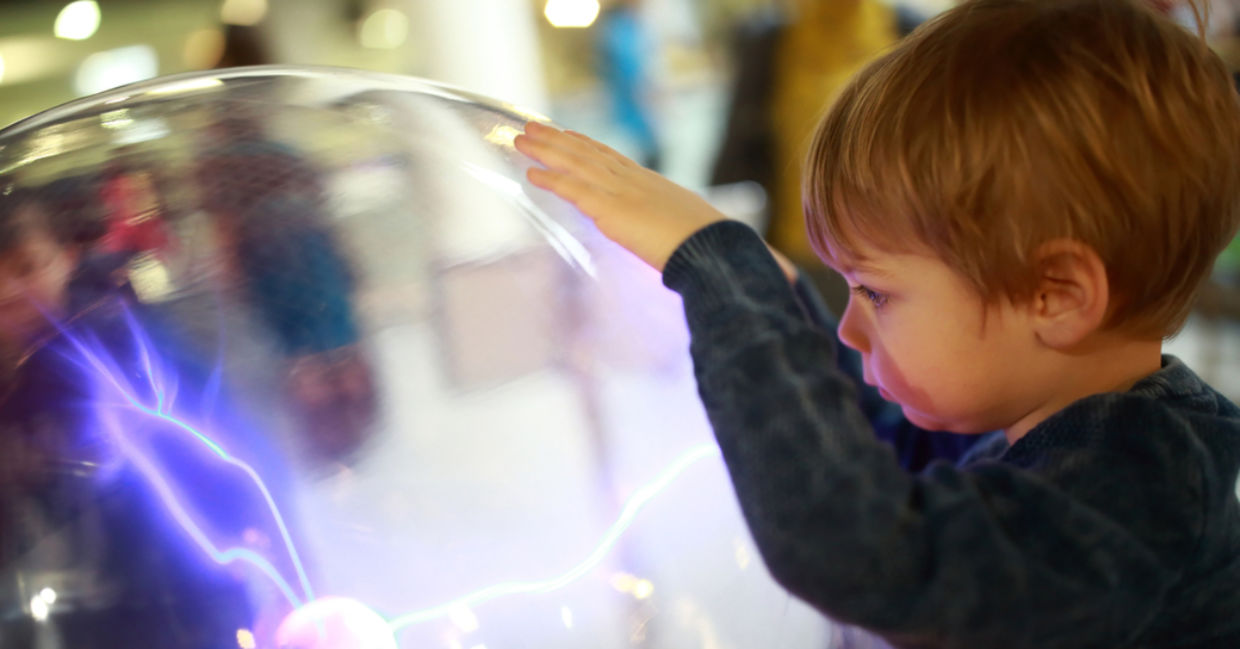
(Chubykin Arkady / Shutterstock.com)
What do people associate with the Metropolitan Museum of Art, affectionately called the Met? For most, this iconic New York museum is a treasure trove of beautifully curated artistic expression. As the Met’s website explains: “The Metropolitan Museum of Art is one of the world's largest and finest art museums. Its collections include 1.5 million works of art spanning 5,000 years of world culture, from prehistory to the present and from every part of the globe.”
But since September 9, 2023, as Hyperallergic reports, the Met is also the setting for a new, super-creative hub for kids aged 3-11 and their families, that promises hands-on discovery. This “81st St Studio”, what Fast Company calls a microcosm of the Met, condensed and repackaged for curious young minds, is an inviting space designed to transcend traditional barriers between art and science. A place the children of journalists at the press preview, are reported to have run into like kids pouring out for recess!
View this post on Instagram
A walk-in creativity hub where art and science meet
Education, NPR points out, is part and parcel of most museums today. But what makes 81st St Studio unique, is that it sets out to help children understand the materials such as wood, metal and clay that are used to make art.
This interactive learning center has opened with an emphasis on wood. Coming in through the entrance, visitors see tree trunks, corrugated cardboard, a carved wooden screen among other examples. Visitors, says a Met news release can participate in activities such as woodblock carving and drum making. According to Heidi Holder, Chair of the Met’s education department, quoted by NPR, “You can touch wood [here]. You can go right up to it and kiss it.”
Holder sees no contradiction in this new foray into science. NPR reports that Holder recently said that the Met is a science institution. As she explains: “We have three big parts of ourselves: our scientific research, our conservation and our art.” As Holder explains, even when objects created hundreds of years earlier come in, a scientific understanding of the materials used will help staff better understand the art itself.
This view is supported by a comment from Max Hollein, the Met’s director, who said in the above-mentioned Met news release that “Through immersive activities, the Studio inspires children to explore connections between art and science, which is so valuable for creating a lifelong love and appreciation for art and artistic practices.”
As you can expect, this permanent exhibit is teeming with interactive fun, cozy corners to explore or read in, and art and science activities to encourage self expression. No traditional glass exhibition cabinets here, although several exhibits reference the Met’s collection. Instead, the 3,500-square-foot center is filled with seven stations that encourage visitors to explore them using all their senses.
Calling all wee-sized art and science lovers!
So says the Instagram post above, reaching out to kids and their families through its playfully disruptive, but educational mission to overcome perceived barriers between art and science.
As Holder, who has focused on developing the space in the last few years, told Hyperallergic, “It is an open space where you can create your own path…You can learn at your own pace. You can take risks, be curious, have fun, and discover things.”
A music installation, for instance, helps kids understand how materials influence sound. It is made up of several creative music-making devices. Intrigued young visitors can pull open small, drawer-like boxes to reveal, for example, an accordion emitting an airy chime as the opening and closing motion compresses the air inside it.
Towards the back of the Studio, the installations focus on ideas about optics and light, relating strongly to perception, and both so central to art and science. A patterned ceiling in this section, inspired by the Japanese word for the sun’s rays filtered through the trees, komorebi, as Fast Company reveals, has been designed to convey the quality of light as it changes through the day and eventually, the seasons.
Significantly, not all are high-tech stations. Some, like a building hub brimming with cardboard, Velcro, and tape, are entirely analog. And there’s storytime twice a week, as the space’s website shares.
In tune with its ambitions to serve as a community hub, the 81st Street Studio is free to enter for children and their caregivers, no museum ticket required, during regular Met hours.
YOU MIGHT ALSO LIKE:
Can Seeing a Beautiful Painting Connect you to Others?
5 Reasons Adults Should Try Coloring
Acclaimed Artist Recreates ‘Water Lilies’ From Iconic Bricks







